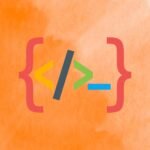Introduction: My Love-Hate Relationship with the ‘for loop’ in Python
Hey there fellow programmers! ? Today, I want to dive into a topic that has caused me both excitement and frustration throughout my coding journey: implementing a ‘for loop’ in Python. As a young Indian American girl who loves programming and runs a tech blog, I’ve had my fair share of experiences with this fundamental construct. From my time spent in California to my adventures in New York, programming has become an integral part of my life. So, let’s buckle up and explore the best way to conquer the ‘for loop’ in Python!
The Basics of the ‘for loop’ in Python
Alright, let’s start by understanding the essence of a ‘for loop’ in Python. Simply put, it allows us to repeat a certain block of code a specified number of times or iterate over a collection of values. It’s like having a superpower that lets you automate tasks and perform actions efficiently. But hey, hold your horses, as with great power comes great responsibility!
A Simple Example to Get You Started
To illustrate the magic of a ‘for loop’ in Python, let’s consider a scenario where we want to print the numbers from 1 to 5 on the screen. Brace yourself, here’s a piece of code that does just that:
for num in range(1, 6):
print(num)
In this example, the range() function generates a sequence of numbers starting from 1 (inclusive) up to 6 (exclusive). The ‘num’ variable represents each individual number in the sequence, and the ‘print(num)’ line inside the loop displays the current number on the screen. Voila! You’ll see the numbers 1, 2, 3, 4, and 5 beautifully printed on your terminal.
Tips and Tricks: Mastering the ‘for loop’
Now that we have our own little code snippet buzzing with awesomeness, let me share some personal tips and tricks that I’ve picked up along the way. These handy techniques will help you level up your ‘for loop’ game in Python.
1. Diving into Iterables: What Can We Loop Over?
Now, you might be wondering, ‘Hey, what can I actually loop over using a ‘for loop’?’ Well, my friend, the possibilities are endless! Python offers a wide range of iterables to play with, such as lists, tuples, strings, sets, dictionaries, and more. It’s like a smorgasbord of possibilities, ready for you to explore.
2. Embracing Enumerate: Conquering the Indexing Challenge
Sometimes, you not only need the values from an iterable but also their corresponding indices. Fear not, for the built-in enumerate() function is here to save the day! By combining it with a ‘for loop,’ you can effortlessly access both the index and value of each element in your iterable. Talk about killing two birds with one stone!
3. Nested ‘for loop’ Magic: Unleash the Power of Loops Within Loops
Imagine a scenario where you want to generate a multiplication table from 1 to 10. A single ‘for loop’ might not be enough to accomplish this task. But fear not, for nested ‘for loops’ are here to save the day! By nesting one ‘for loop’ within another, you can manipulate different variables to create precisely what you need. With this technique, you can conquer even the most intricate programming challenges!
The Holy Grail: List Comprehension and the ‘for loop’
Alright, my fellow Python enthusiasts, it’s time to unveil the secret weapon in our ‘for loop’ arsenal: list comprehension! ? This Pythonic technique allows us to create lists based on existing ones, all in a concise and elegant way. Brace yourself because I’m about to blow your mind with an example:
squares = [num**2 for num in range(1, 6)]
print(squares)
In this snippet, we use the power of a ‘for loop’ inside brackets to create a new list called ‘squares.’ The expression ‘num**2’ calculates the square of each number in the range from 1 to 6. When we print the ‘squares’ list, we’ll witness the beauty of list comprehension as it magically displays [1, 4, 9, 16, 25] on our screen. Mind = blown!
Conclusion: Conquering the ‘for loop’ in Python
Overall, the ‘for loop’ in Python is a remarkable tool that opens up a world of possibilities. It allows us to automate repetitive tasks, iterate over collections, and unravel complex problems. Remember, the key to mastering the ‘for loop’ lies in practice, experimentation, and embracing its versatility.
Finally, let me leave you with a random fact related to the topic: did you know that the concept of a ‘for loop’ originated from the ALGOL 60 programming language? Quite fascinating, isn’t it?
Now, it’s your turn to dive into the world of the ‘for loop’ in Python. Embrace the challenge, experiment with different use cases, and unleash your creativity! Happy coding, my fellow programmers! ?




